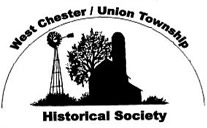Cemetery...
A cemetery is a history of a people, a perpetual Record of yesterday.
A cemetery exists because every life is worth Loving and remembering......
Always.
A cemetery exists because every life is worth Loving and remembering......
Always.
West Chester Cemetery has also been referred to as Brookside Cemetery. That name was derived because the cemetery lays next to a brook that curves around the bottom of the hill on the northwest side.
In the early years, people would bury their loved ones on family farms or in church graveyards. James Cummins did just that in West Chester. Residents of West Chester who did not have a farm went to Mr. Cummins to buy a plot for their loved ones who had passed away.
A group of residents formed the West Chester Cemetery Association on April 3, 1866. They helped keep the cemetery in good shape by cutting grass, keeping weeds down and making the road accessible for burials. This group purchased 12.66 acres from James Cummins' grandson. It included the original plots of the Cummins family.
There are three distinct buildings in the cemetery. As you enter you will notice a white building sitting on a small hill. This is considered the Chapel. Before the rise of funeral homes, this building was used to accommodate a family in the event of bad weather. At that time, all funerals or visitations were held in the home of the deceased's loved ones. In later years, this building was used as the cemetery office.
The next building to your right is
considered the vault. When weather prevented the deceased from being buried, the cemetery would hold the coffin in this building until the ground was prepared for burial. This building dates back before 1875. The walls are three feet thick.
The last building is considered the tool
shed, where all the equipment used for the digging of the graves is stored.
As you pass the tool shed on your right there is a small area that has no stones. This area is considered "Potter's Field". Residents who could not afford to buy burial plots were given this area to be buried free of charge.
There are many different types of stones in the cemetery and it is worth the time to just walk among our founding families and read the inscriptions.
